Key takeaways:
- Stage fright can significantly impact performance and confidence but acknowledging fears is essential to overcoming them.
- Confidence enhances performance in battles, while doubt can hinder skill execution; transforming anxiety into energy is crucial.
- Establishing a pre-battle routine, including visualization and music, helps in managing stage fright and boosting confidence.
- Building a supportive community among dancers fosters open dialogue about fears, leading to growth and improved performance.

Understanding stage fright effects
Stage fright can manifest in various ways, from racing hearts to the feeling of being frozen in place. I still remember the first time I stepped onto a stage for a breakdancing battle; my palms were sweaty, and my mind raced with uncertainty. Have you ever felt that paralyzing fear, as if everyone’s eyes are piercing right through you?
The effects of stage fright often go beyond the physical symptoms. It can cloud your judgment and affect your performance. I once overthought every move during a competition, leading to a lackluster routine that didn’t showcase my true abilities. What if I had just embraced the moment instead of letting fear dictate my actions?
It’s important to recognize how stage fright can drain your confidence. The anxiety can make you second-guess your skills, leaving you questioning whether you truly belong in the breaking community. I learned that acknowledging my fears was the first step toward overcoming them, allowing me to reclaim the joy of dancing without the burden of worry.
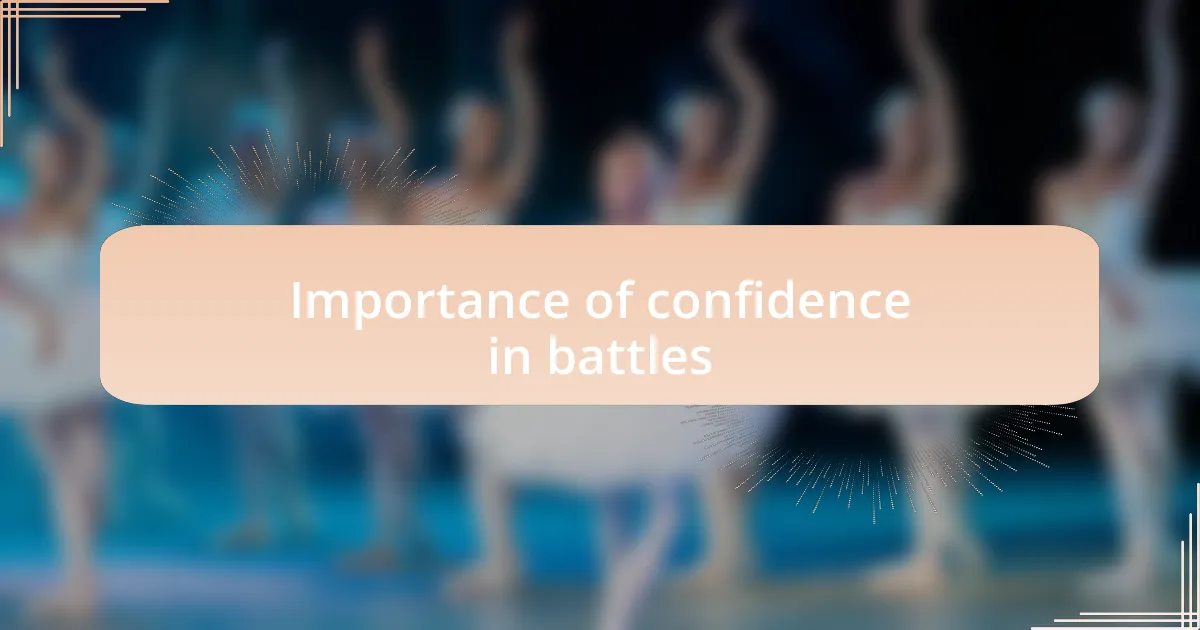
Importance of confidence in battles
Confidence plays a crucial role in battles, particularly in breakdancing. When you’re confident, your moves flow more naturally, allowing you to connect with the audience and your opponent. I remember a time when I confidently executed a challenging freeze; the crowd’s reaction was electric, and it fueled my performance even more. Have you ever experienced that rush when everything clicks?
On the flip side, I’ve noticed that doubt can undermine even the best dancer’s skills. I’ve had moments where I hesitated before a move, my mind filled with “What if?” questions, robbing me of my momentum. It’s astonishing how quickly a lack of confidence can cascade into an uninspired performance. In those times, I learned to redirect the anxious energy into something productive, focusing on what I could bring to the floor rather than what might go wrong.
Ultimately, confidence isn’t just about believing in oneself; it’s about creating an atmosphere where you can shine. I find that when I approach battles with a sense of self-assurance, I’m not only more expressive but also open to taking risks. Have you ever realized that stepping out of your comfort zone often leads to the most rewarding dances? I truly believe that harnessing confidence can transform a good battle into a memorable one.
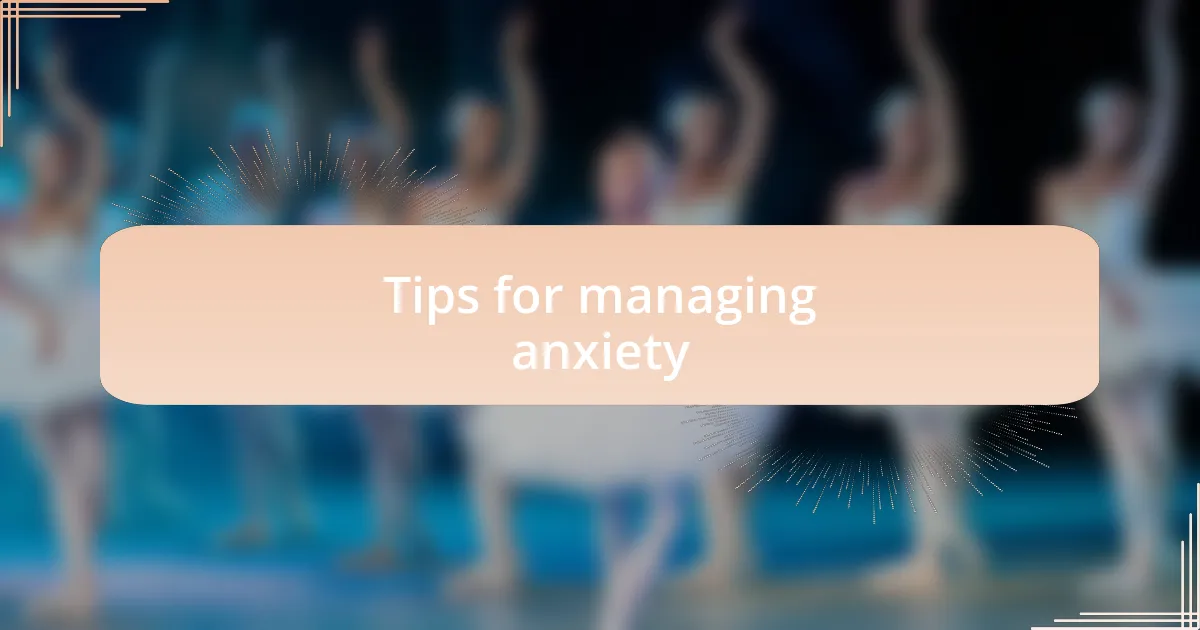
Tips for managing anxiety
Managing anxiety is essential for any dancer, especially during intense moments like battles. One strategy that truly helped me was visualization. Before stepping on the floor, I would take a quiet moment to imagine my routine flowing seamlessly. It’s fascinating how just picturing the applause can transform my nervous energy into excitement. Have you tried visualizing your performance?
Another technique that I found incredibly valuable is grounding oneself in the present. When I start to feel that wave of anxiety, I focus on my breath. Taking a few slow, deep breaths can do wonders; it helps me regain control and reset my mind. I remember a battle where I felt overwhelmed, but by tuning into my breath, I was able to center myself and feel more connected to my movements. Has anyone else felt the weight lift with a simple breath?
Lastly, connecting with fellow dancers can be a game-changer. Sharing our experiences and anxieties can create a supportive environment, reminding us that we’re not alone in this. I once spoke with a veteran dancer who candidly shared their own struggles with stage fright, and it made me realize that even the most experienced performers face similar challenges. How often do you reach out for support before a big event? I’ve come to understand that vulnerability can foster community and bolster my confidence on the dance floor.
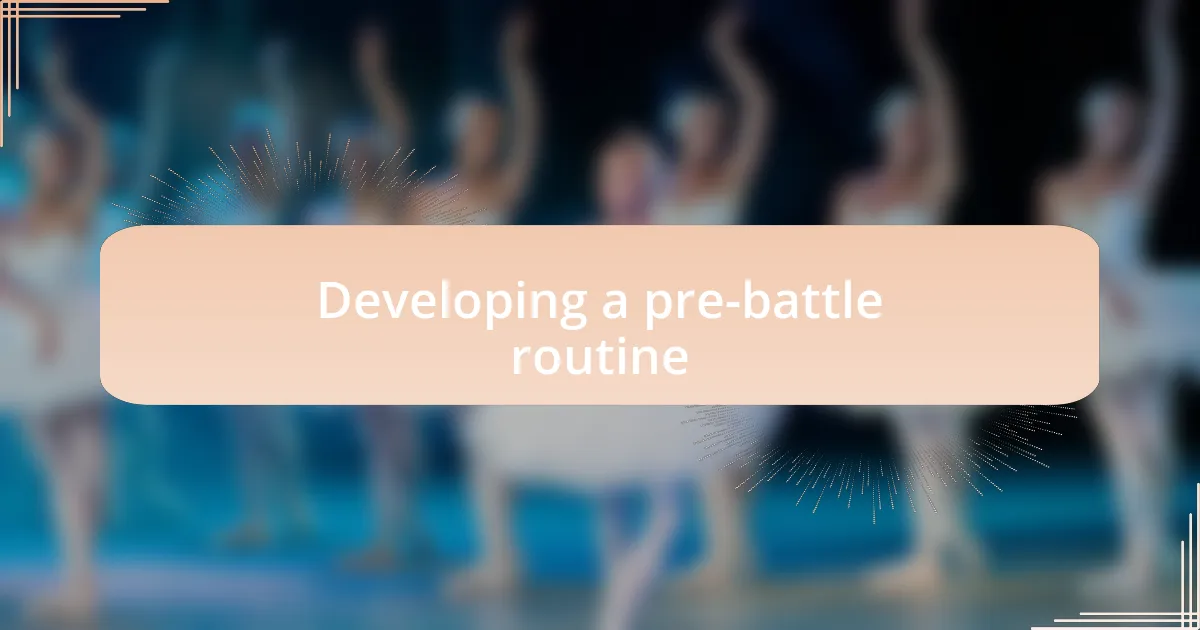
Developing a pre-battle routine
Establishing a pre-battle routine was crucial for me in overcoming stage fright. I found that incorporating a mix of stretching, light footwork, and a few go-to moves helped me get into the right headspace. It’s almost like setting the stage for my mind and body to sync up. Has anyone else experienced that moment before a battle where movement feels like a dance of its own, easing away the jitters?
One specific ritual I embraced was listening to my favorite hype music right before I entered the venue. Tunes that pumped me up became a soundtrack to my confidence, almost like a protective shield against anxiety. I remember one battle where the right song kicked in, and suddenly, I was transformed from an anxious dancer to a focused competitor. Do you have a song that makes you feel invincible?
Lastly, visualizing my performance as part of my routine has been a game-changer. Imagining not just the technical steps but also how I would feel on stage helped me cultivate a sense of familiarity. During a particularly nerve-wracking competition, I visualized nailing my routine and, when it was my turn, that imagery played in my mind like a well-rehearsed film. How often do you paint a picture of your success before it happens? For me, that simple act turned enough anxiety into empowerment, making each battle a new opportunity.
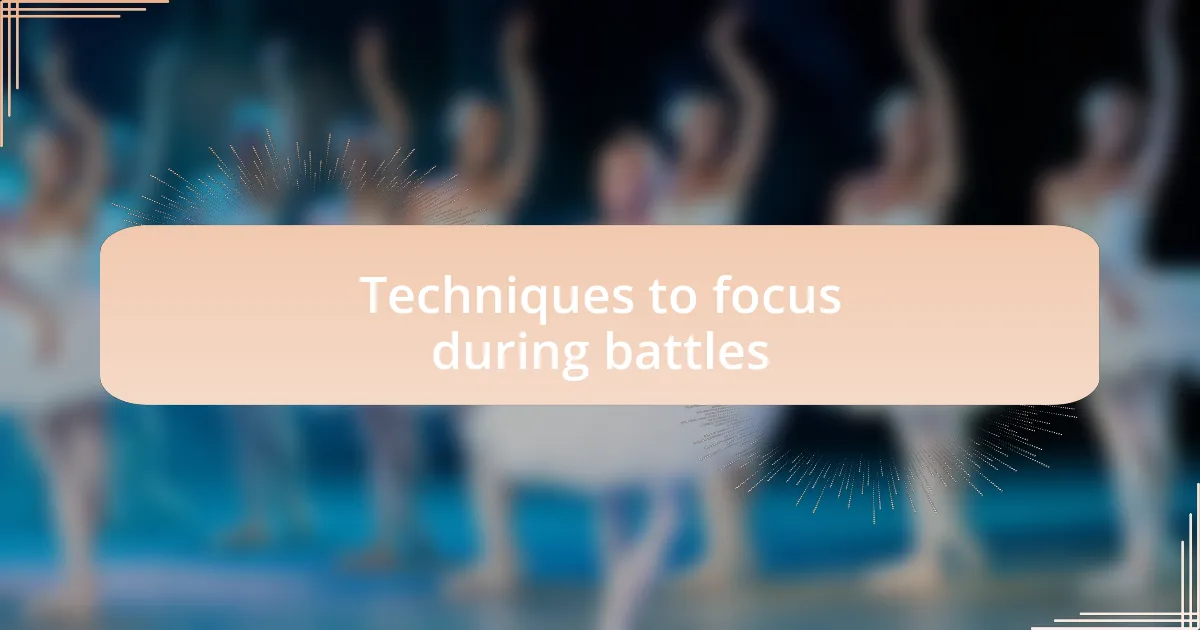
Techniques to focus during battles
Finding my center amidst the chaos of a battle is something I’ve come to value immensely. I often take a moment to close my eyes and take a few deep breaths, focusing solely on the rhythm of my breathing. This simple technique grounds me, allowing me to clear my mind and enter the battle with a sense of calm. Have you ever noticed how just a few breaths can change your entire outlook?
During battles, I also rely heavily on positive affirmations. These can be as simple as repeating “I am prepared” or “I’m here to shine” in my mind. I remember a particularly challenging competition where self-doubt crept in right before my turn. It was then that I repeated my mantra, and it felt like armor against hesitation. What affirmations do you use to remind yourself of your strength?
Another technique that works wonders for me is honing in on my surroundings. Instead of letting the crowd’s energy overwhelm me, I focus on one detail in the venue—a dancer, a light, anything that anchors me. This practice not only keeps distractions at bay but also allows me to channel the crowd’s energy into my moves. Have you ever tried to absorb the atmosphere rather than feel intimidated by it? For me, it transforms a daunting experience into a collaboration with the audience.

Personal experiences with overcoming fear
When I first faced my stage fright, it felt like standing under the spotlight with a million eyes scrutinizing my every move. I vividly recall one competition where my hands trembled, and my heart raced. In that moment of vulnerability, I chose to visualize the audience as friends cheering me on instead of critics, and it shifted my perspective completely. How do you view your audience when you step onto the stage?
There’s something powerful about sharing the experience of fear with others. I remember discussing my stage fright with fellow dancers, and their stories echoed my feelings. It was comforting to know I wasn’t alone; we all wrestle with fear in our own ways. Have you ever found solace in shared experiences? That connection sparked a sense of courage in me that helped me face the next battle with less trepidation.
I also learned that embracing vulnerability can actually enhance my performance. One day, after a particularly nerve-wracking practice, I decided to freestyle in front of a small group of friends. I poured my emotions into my movements, allowing my fear to fuel my creativity rather than stifle it. It was liberating—realizing that my fear could be a source of energy instead of a barrier. Have you ever allowed your fear to inspire you? Embracing that fear was a turning point for me, igniting a newfound passion for breaking.
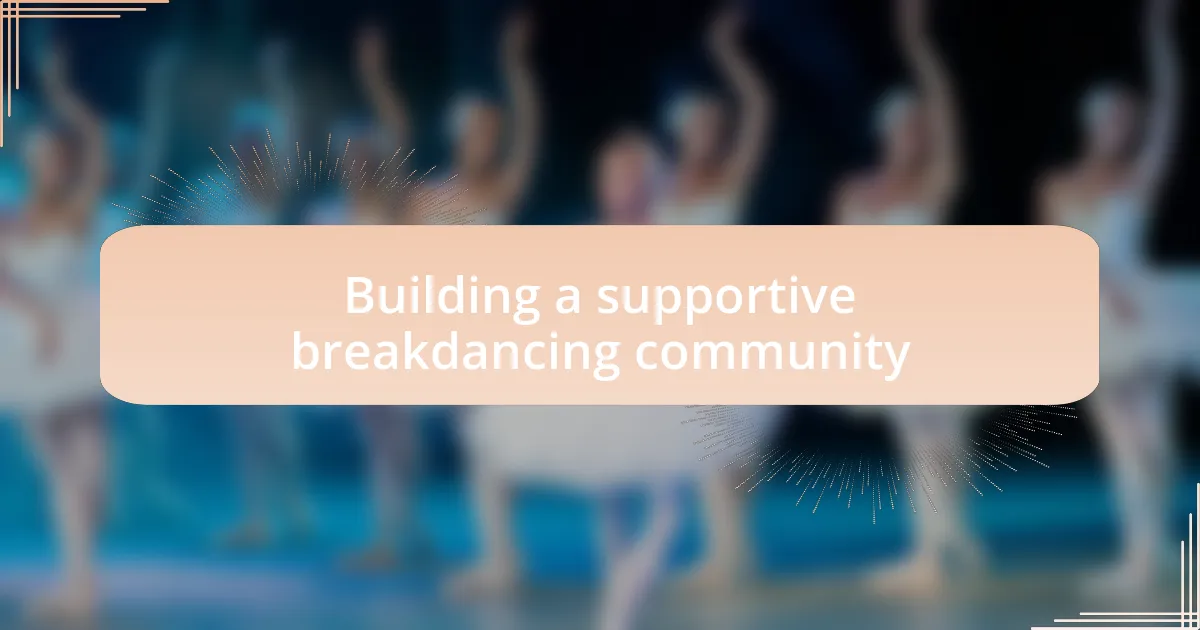
Building a supportive breakdancing community
Building a supportive breakdancing community is essential for fostering confidence among dancers. I remember one time during a jam session when a fellow b-girl encouraged me after a tough battle. Her words struck a chord with me; they served not only to uplift but also to remind me that we’re all in this together. Have you ever felt that rush of warmth from a simple compliment? That little boost can transform your mindset completely.
Creating spaces for open dialogue can really strengthen our community. I’ve witnessed moments where dancers openly shared their struggles with performance anxiety, which helped others realize they weren’t alone. It’s surprising how much we can learn from each other’s vulnerabilities. Have you ever felt inspired by someone’s honesty? That candidness can break down barriers, making room for growth and connection.
Moreover, hosting regular meetups or workshops can bolster our bonds. I recall attending a session focused on mental resilience, where we practiced techniques to cope with stage fright together. It was enlightening to not only improve our skills but also to build friendships through shared experiences. What do you think makes these gatherings so impactful? They allow us to cultivate a nurturing environment where we can all flourish as artists and individuals.